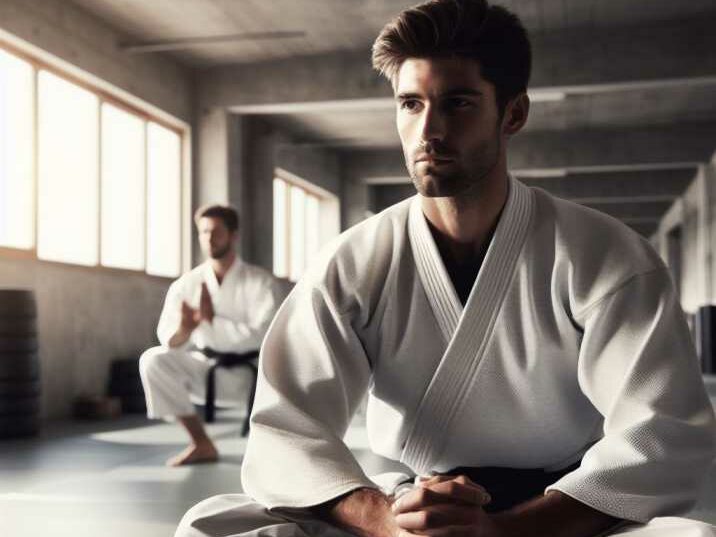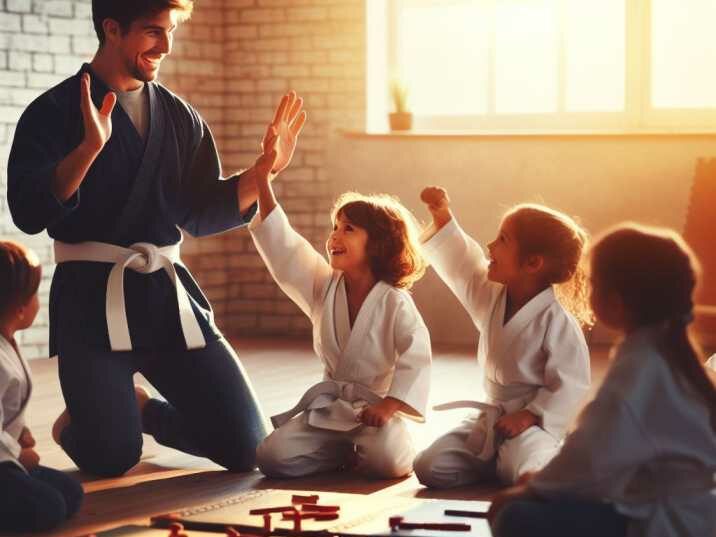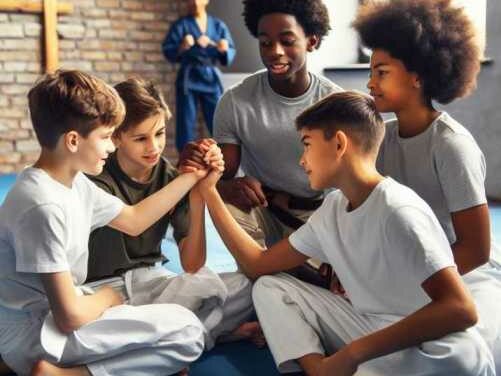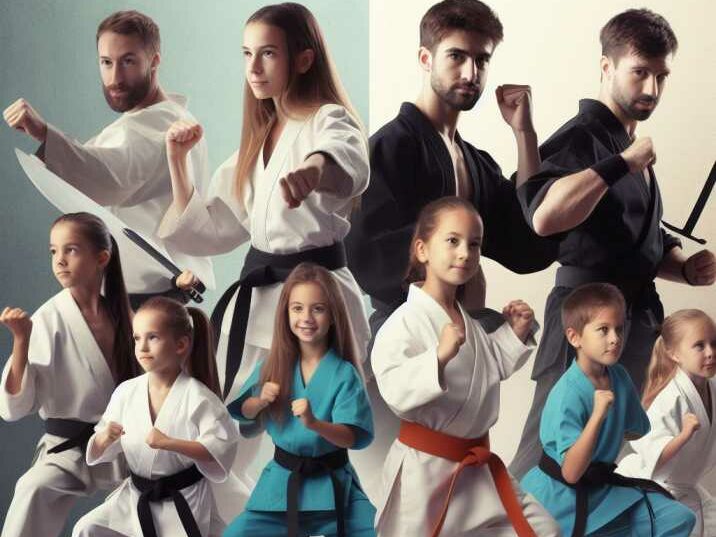introduction
Table of Contents
Martial Arts and Regular Martial Arts
Martial art , a discipline rooted in ancient traditions, has evolved into a diverse practice catering to individuals of all ages. As parents seek ways to channel their children’s energy positively, the question arises: “What’s the difference between Kids Martial Arts and regular martial arts?“
Understanding the Foundations
1. Philosophical Foundation:
In regular martial arts, the emphasis often lies in self-defense, discipline, and personal growth. Adults engage in practices deeply rooted in the philosophy of the martial art style they choose. On the flip side, Kids Martial Arts incorporates these principles but tailors them to match the developmental needs of children. Values like respect, focus, and teamwork are instilled in a more playful and age-appropriate manner.

2. Techniques and Forms:
The techniques taught in regular martial arts classes are often more intricate and varied, suited for the physical capabilities of adults. In Kids Martial Arts, the focus is on fundamental movements, basic self-defense, and coordination exercises. The forms are simplified to match the attention span and motor skills of children.
Tailoring Training for Different Age Groups
3. Instructional Approach:
Adult classes typically involve a more serious and disciplined instructional approach, with a focus on perfection and mastery of techniques. Kids Martial Arts, however, employs a more interactive and game-based teaching style. Instructors use creative methods to ensure children absorb the teachings while having fun.

4. Physical Demands:
Regular martial arts can demand significant physical prowess, agility, and endurance. Kids Martial Arts, while promoting physical fitness, is designed to be less strenuous and more developmentally appropriate. The emphasis is on enhancing coordination, flexibility, and basic motor skills.

Unique Benefits for Each Age Group
5. Social Interaction:
Regular martial arts often involve a sense of individual achievement. In Kids Martial Arts, the focus extends to social interaction and teamwork. Children learn the importance of cooperation and communication, building not only physical skills but also emotional intelligence.

6. Life Skills Emphasis:
While both practices instill discipline, regular martial arts often emphasizes individual discipline for personal growth. Kids Martial Arts integrates life skills like patience and goal-setting in a manner that aligns with a child’s developmental stage, laying a foundation for positive habits.

Visualizing the Differences:
| Aspect | Regular Martial Arts | Kids Martial Arts |
|---|---|---|
| Philosophical Foundation | Self-defense, discipline, personal growth | Age-appropriate focus on values and teamwork |
| Techniques and Forms | Intricate and varied | Simplified, fundamental movements |
| Instructional Approach | Serious and disciplined | Interactive and game-based teaching |
| Physical Demands | High, demanding agility and endurance | Developmentally appropriate, focusing on coordination |
| Social Interaction | Individual achievement | Emphasis on teamwork and social interaction |
| Life Skills Emphasis | Individual discipline for personal growth | Integration of life skills in a child-friendly manner |
Conclusion: Balancing Act for Holistic Development
In the realm of martial arts, the difference between Kids Martial Arts and regular martial arts lies not just in the techniques but in the overall approach to training. Both offer unique benefits tailored to the specific needs and developmental stages of their practitioners.
As parents, understanding these distinctions helps in making informed decisions regarding which martial arts path aligns best with their child’s temperament and developmental requirements. Whether it’s the disciplined path of regular martial arts or the playful journey of Kids Martial Arts, the ultimate goal remains the same – fostering physical, mental, and emotional well-being.

FAQs:
1. Is it safe for kids to practice martial arts?
Yes, when conducted in a well-supervised and age-appropriate environment, martial arts can be a safe and beneficial activity for children.
2. What age is suitable for starting Kids Martial Arts?
Most Kids Martial Arts programs accept children as young as 4 years old, although this may vary depending on the school.
3. Can adults participate in Kids Martial Arts classes?
While Kids Martial Arts classes are designed for children, some schools offer family classes that allow parents to join in the fun and learning.
4. Are the belts and ranking systems the same for Kids Martial Arts and regular martial arts?
The ranking systems can differ, with Kids Martial Arts often having a simplified version tailored to children’s understanding and motivation.
5. Do Kids Martial Arts classes include sparring?
Sparring in Kids Martial Arts is typically introduced at more advanced levels and is conducted in a controlled and supervised manner.
6. How long does it take to progress in martial arts for adults?
Progression in regular martial arts can vary, but it often takes several years to attain higher belts and mastery of advanced techniques.
7. What benefits can adults gain from practicing martial arts?
Adults can experience improved physical fitness, enhanced self-discipline, stress relief, and increased self-confidence through regular martial arts practice.


